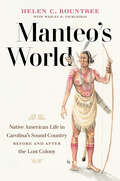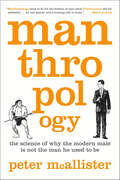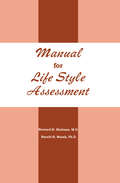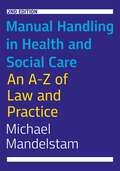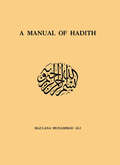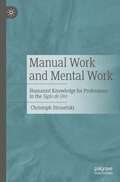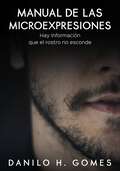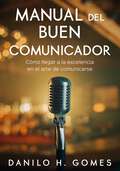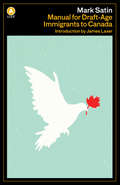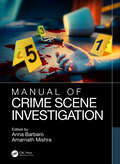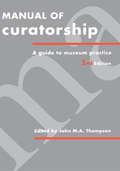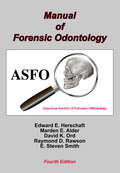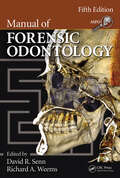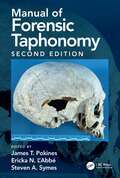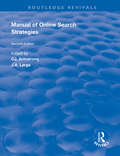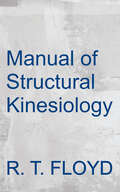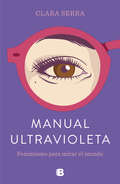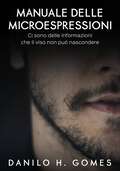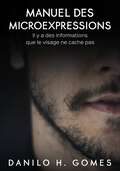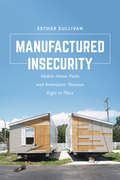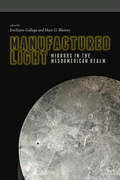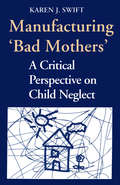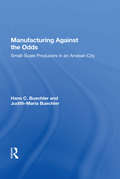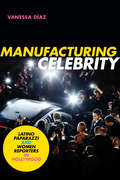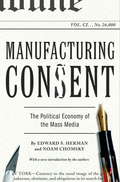- Table View
- List View
Manteo's World: Native American Life in Carolina's Sound Country before and after the Lost Colony
by Helen C. RountreeRoanoke. Manteo. Wanchese. Chicamacomico. These place names along today's Outer Banks are a testament to the Indigenous communities that thrived for generations along the Carolina coast. Though most sources for understanding these communities were written by European settlers who began to arrive in the late sixteenth century, those sources nevertheless offer a fascinating record of the region's Algonquian-speaking people. Here, drawing on decades of experience researching the ethnohistory of the coastal mid-Atlantic, Helen Rountree reconstructs the Indigenous world the Roanoke colonists encountered in the 1580s. Blending authoritative research with accessible narrative, Rountree reveals in rich detail the social, political, and religious lives of Native Americans before European colonization. Then narrating the story of the famed Lost Colony from the Indigenous vantage point, Rountree reconstructs what it may have been like for both sides as stranded English settlers sought to merge with existing local communities. Finally, drawing on the work of other scholars, Rountree brings the story of the Native people forward as far as possible toward the present. Featuring maps and original illustrations, Rountree offers a much needed introduction to the history and culture of the region's Native American people before, during, and after the founding of the Roanoke colony.
Manthropology: The Science of Why the Modern Male Is Not the Man He Used to Be
by Peter McAllisterManthropology is the first of its kind. Spanning continents and centuries, it is an in-depth look into the history and science of manliness. From speed and strength, to beauty and sex appeal, to bravado and wit, it examines how man today compares to his masculine ancestors.Peter McAllister set out to rebut the claim that man today is suffering from feminization and emasculation. He planned to use his skills as a paleoanthropologist and journalist to write a book demonstrating unequivocally that man today is a triumph---the result of a hard-fought evolutionary struggle toward greatness.As you will see, he failed. In nearly every category of manliness, modern man turned out to be not just matched, but bested, by his ancestors. Stung, McAllister embarked on a new mission. If his book couldn't be a testament to modern male achievement, he decided, it would be a record of his failures.Manthropology, then, is a globe-spanning tour of the science of masculinity. It kicks off in Ice Age France, where a biomechanical analysis demonstrates that La Ferrassie 2, a Neanderthal woman discovered in the early 1900s, would cream 2004 World Arm Wrestling Federation champion Alexey Voyevoda in an arm wrestle. Then it moves on to medieval Serbia, showing how Slavic guslar poets (who were famously able to repeat a two thousand-line verse after just one hearing) would have destroyed Curtis Jackson, aka 50 Cent, in a battle rap. Finally, it takes the reader to the steaming jungles of modern equatorial Africa, where Aka Pygmy men are such super-dads, they even grow breasts to suckle their children. Now, that's commitment.For modern man, the results of these investigations aren't always pretty. But in its look at the history of men, Manthropology is unfailingly smart, informative, surprising, and entertaining.
Manual For Life Style Assessment
by Harold H. Mosak Bernard H. ShulmanFirst published in 1988. Routledge is an imprint of Taylor & Francis, an informa company.
Manual Handling in Health and Social Care, Second Edition: An A-Z of Law and Practice
by Michael MandelstamManual Handling in Health and Social Care is written for all those involved in the manual handling of adults or children - including those carrying it out, assessors, managers and commissioners.It lays out the current legal requirements in a non-technical way and includes case studies illustrating the law applied in practice, across health, social care and sometimes educational settings. The book applies to England, Scotland, Wales and Northern Ireland. An extended introduction sets out challenges, past, present and future, including safety, balancing risk with duties to meet people's needs, human rights, avoidance of blanket policies, mental capacity, safeguarding, the limited resources of statutory services and single-handed care. It also considers some of the legal implications of increased use of technology (including remote assessment), as well as the "mechanisation" of care and its application to manual handling.The main part of the book is in the form of an A-Z guide, providing quick access to relevant legislation and common law (negligence) rules applying to personal injury cases. It covers also, extensively, judicial review legal challenges to decisions, when people and their families disagree with manual handing decisions that have been made. In addition, relevant ombudsman cases are included.The book will be essential reference for staff and managers in health and social care settings, students, legal professionals and all those working to ensure good practice and compliance with the law.
Manual Of Hadith
by Maulana Muhammad Ali"First Published in 1995, Routledge is an imprint of Taylor & Francis, an informa company."
Manual Work and Mental Work: Humanist Knowledge for Professions in the Siglo de Oro
by Christoph StrosetzkiInformation Text: In the early modern period, numerous texts deal with professions by presenting the knowledge required in each case, individual fields of activity, purpose, origin and prestige. The course of argumentation is humanistic, insofar as it mostly starts from the human being. The ancient idea of the primacy of mental work over manual work is formative here. The importance of Spain results from the fact that the Spanish king Charles V was both emperor and ruler of the colonies in America, i.e. he ruled a world empire by the standards of the time. After discussing some central categories, overall representations of knowledge, professions, and prominent professional representatives are presented. Here, the hierarchization and its relativization by satire is revealing. The mechanical arts and the artes liberales are then presented on the basis of individual professions selected as characteristic examples, each with its own specific knowledge. The higher faculties of medicine, theology and jurisprudence with their representatives form the conclusion.
Manual de las Micro Expresiones: Hay información que el rostro no esconde
by Danilo H. GomesEl MANUAL DE MICRO EXPRESIONES reúne brevemente las micro expresiones de 7 emociones básicas universales y 3 reacciones internas expresadas, en consecuencia, por el rostro humano. Acompaña imágenes detalladas para una mejor comprensión. Este libro puede usarse como un manual básico de lectura sobre micro expresiones y una guía para mejorar los estudios del lenguaje corporal.
Manual del Buen Comunicador: Cómo llegar a la excelencia en el arte de comunicarse
by Danilo H. Gomes¿No te sabes comunicar bien? ¿Deseas mejorar tu capacidad de persuasión y tus habilidades verbales? Encuentra lo que necesitas en esta obra. La raza humana es la única de entre las demás creaturas en el planeta Tierra que es capaz de comunicarse a través de un lenguaje verbal. A pesar de ser una habilidad presente en los seres humanos, la mayoría de ellos encuentran enorme dificultad en expresarse satisfactoriamente. El poder de las palabras es inmesurable, aún más si se utilizan de forma correcta. Velocidad, gestos, respiración, armado de frases, todo cuenta a la hora de comunicarse. Un buen comunicador logra sus objetivos utilizando sus capacidades ligadas al lenguaje. Este libro te ofrecerá ayuda para que evoluciones efectivamente en tus poderes de comunicación verbal y no verbal.
Manual for Draft-Age Immigrants to Canada
by Mark SatinIn print for the first time since 1971, Manual for Draft-Age Immigrants to Canada has once again become relevant in a time of major political upheaval in the United States of America.First published in 1968 by House of Anansi Press, the Manual for Draft-Age Immigrants to Canada was a handbook for Americans who refused to serve as draftees in the Vietnam War and were considering immigrating to Canada. Conceived as a practical guide with information on the process, the Manual also features information on aspects of Canadian society, touching on topics like history, politics, culture, geography and climate, jobs, housing, and universities.The Manual went through several editions from 1968–71. Today, as Americans are taking up the discussion of immigration to Canada once again, it is an invaluable record of a moment in our recent history.
Manual of Crime Scene Investigation
by Anna Barbaro Amarnath MishraOver the past several years, myriad manuals on crime scene investigations have been published with each focusing on select, or partial, aspects of the investigation. Crime scene investigation, done right, is a multi-faceted process that requires various forms of evidence to be collected, examined, and analyzed. No book available has addressed procedures to present global best practices by assembling a collection of international experts to address such topics. Manual of Crime Scene Investigation is a comprehensive collaboration of experts writing on their particular areas of expertise as relates to crime scenes, evidence, and crime scene investigation. The book outlines best practices in the field, incorporating the latest technology to collect, preserve, and enhance evidence for appropriate analysis. Various types of forensic evidence are addressed, covering chain of custody, collection, and utility of such evidence in casework, investigations, and for use in court. The approach, and use of international contributor experts, will appeal to a broad audience and be of use to forensic practitioners, and the forensic science community worldwide. Key features: • Assembles an international team of contributing author experts to present the latest developments in their crime scene field of specialty • Examines global best practices and what are consistently the most reliable tactics and approach to crime scene evidence collection, preservation, and investigation • Provides numerous photographs and diagrams to clearly illustrate chapter concepts Manual of Crime Scene Investigation serves as a vital resource to professionals in police science and crime scene investigations, private forensic institutions, and academics researching how better real-world application of techniques can improve the reliability and utility of evidence upon forensic and laboratory analysis.
Manual of Curatorship: A Guide to Museum Practice
by Alexander Fenton John M. A. Thompson Douglas A. Bassett Antony J. Duggan Geoffrey D. LewisBased on original contributions by specialists, this manual covers both the theory and the practice required in the management of museums. It is intended for all museum and art gallery profession staff, and includes sections on new technology, marketing, volunteers and museum libraries.
Manual of Forensic Odontology
by Andzrej HuczynskiThe most exhaustive book on forensic dentistry, the fourth edition of this volume covers the latest advances in the field, including regulations affecting forensic dental practice and procedures in light of the Health Insurance Portability and Accessibility Act, updated ABFO guidelines, and new digital radiographic and photographic developments. Th
Manual of Forensic Odontology
by David Williams David GreeneAdvances in forensic odontology have led to improvements in dental identification for individual cases as well as in disaster victim identification (DVI). New and updated technologies mean advances in bitemark analysis and age estimation. Growth in the field has strengthened missing persons networks leading to more and faster identifications of un
Manual of Forensic Taphonomy
by Steven A. Symes James T. Pokines Ericka N. L’AbbéThe main goals in any forensic skeletal analysis are to answer who is the person represented (individualization), how that person died (trauma/pathology) and when that person died (the postmortem interval or PMI). The analyses necessary to generate the biological profile include the determination of human, nonhuman or nonosseous origin, the minimum number of individuals represented, age at death, sex, stature, ancestry, perimortem trauma, antemortem trauma, osseous pathology, odontology, and taphonomic effects—the postmortem modifications to a set of remains. The Manual of Forensic Taphonomy, Second Edition covers the fundamental principles of these postmortem changes encountered during case analysis. Taphonomic processes can be highly destructive and subtract information from bones regarding their utility in determining other aspects of the biological profile, but they also can add information regarding the entire postmortem history of the remains and the relative timing of those effects. The taphonomic analyses outlined provide guidance on how to separate natural agencies from human-caused trauma. These analyses are also performed in conjunction with the field processing of recovery scenes and the interpretation of the site formation and their postdepositional history. The individual chapters categorize these alterations to skeletal remains, illustrate and explain their significance, and demonstrate differential diagnosis among them. Such observations may then be combined into higher-order patterns to aid forensic investigators in determining what happened to those remains in the interval from death to analysis, including the environment(s) in which the remains were deposited, including buried, terrestrial surface, marine, freshwater, or cultural contexts. Features Provides nearly 300 full-color illustrations of both common and rare taphonomic effects to bones, derived from actual forensic cases • Presents new research including experimentation on recovery rates during surface search, timing of marine alterations, trophy skulls, taphonomic laboratory and field methods, laws regarding the relative timing of taphonomic effects, reptile taphonomy, human decomposition, and microscopic alterations by invertebrates to bones • Explains and illustrates common taphonomic effects and clarifies standard terminology for uniformity and usage within in the field While the book is primarily focused upon large vertebrate and specifically human skeletal remains, it effectively synthesizes data from human, ethological, geological/paleontological, paleoanthropological, archaeological artifactual, and zooarchaeological studies. Since these taphonomic processes affect other vertebrates in similar manners, The Manual of Forensic Taphonomy, Second Edition will be invaluable to a broad set of forensic and investigative disciplines.
Manual of Online Search Strategies: Volumes I-iii (Routledge Revivals)
by C. J. Armstrong J. A. LargePublished in 1992, like the first, this second edition is not intended as introductory textbook command-driven, Boolean searching. It is targeted at online searchers who already have some knowledge of command languages and may be proficient searchers on databases in one or two subject areas, but when required to venture into new and less familiar territory still need guidance. It is also offered to end users who possess the subject expertise but lack of information retrieval know-how. The Manual is offered as a guide to database selection and a navigational aid through the twists and turns of the retrieval maze; at least some of the dead ends and backtracking may thereby be avoided. This volume, written by experts in their various fields, deals with the subject coverage and record structures of specific databases, offers comparisons between databases (context, indexing procedures, updating policies, etc.), discusses the choice between online and CD-ROM sources (and between hosts if online is selected), and illustrates strategies with numerous search extracts.
Manual of Structural Kinesiology
by R. T. FloydManual of Structural Kinesiology, 22e provides a straightforward view of human anatomy and its relation to movement. While the manual is designed for use in undergraduate structural kinesiology courses, other clinicians and educators will also benefit from the text. The manual clearly identifies specific muscles and muscle groups and describes exercises for strengthening and developing those muscles. The author’s goal continues to be to provide important information in an accessible format through a combination of logical presentation, extensive and clear illustrations, and concise writing style.
Manual ultravioleta: Feminismo para mirar el mundo
by Clara SerraUn libro imprescindible, por uno de los referentes más destacados del feminismo español. Manual ultravioleta es una celebración del feminismo que también pretende desactivar algunos prejuicios, así como explicar aquellas cosas que menos se han entendido o más resistencias generan. Un libro pedagógico accesible, con ejemplos y anécdotas de la historia el feminismo para encarnar las ideas en sucesos más concretos y sensibles. Una obra indispensable donde el feminismo constituye una serie de herramientas para identificar la desigualdad en nuestros contextos y analizar las situaciones cotidianas que vivimos, así como repensarnos a nosotros mismos.
Manuale delle Microespressioni: Ci sono delle informazioni che il viso non può nascondere
by Danilo H. GomesLe microespressioni costituiscono un mistero per la stragrande maggioranza delle persone. Attraverso la lettura della gestualità del viso potremmo aiutare molte persone che nascondono la propria tristezza per orgoglio o per paura. Con un buon manuale a disposizione, la lettura dei volti diventa più semplice. MANUALE DELLE MICROESPRESSIONI riassume le microespressioni legate alle 7 emozioni universali di base e 3 reazioni di risposta interne che vengono espresse dal viso umano, accompagnate da immagini dettagliate per una migliore comprensione. Questo libro può essere utilizzato come manuale di base per la lettura delle microespressioni o una guida per approfondire lo studio del linguaggio del corpo. Aguzza la vista e svela i dettagli nascosti!
Manuel des microexpressions: Il y a des informations que le visage ne cache pas
by Danilo H. GomesLe MANUEL DES MICRO-EXPRESSIONS rassemble brièvement les micro expressions de 7 émotions universelles de base et 3 réactions internes exprimées, par conséquent, par le visage humain. Il est accompagné d'images détaillées pour une meilleure compréhension. Ce livre peut être utilisé comme un manuel de lecture de base sur les micro-expressions et un guide pour améliorer l'étude du langage corporel.
Manufactured Insecurity: Mobile Home Parks and Americans’ Tenuous Right to Place
by Esther SullivanManufactured Insecurity is the first book of its kind to provide an in-depth investigation of the social, legal, geospatial, and market forces that intersect to create housing insecurity for an entire class of low-income residents. Drawing on rich ethnographic data collected before, during, and after mobile home park closures and community-wide evictions in Florida and Texas—the two states with the largest mobile home populations—Manufactured Insecurity forces social scientists and policymakers to respond to a fundamental question: how do the poor access and retain secure housing in the face of widespread poverty, deepening inequality, and scarce legal protection? With important contributions to urban sociology, housing studies, planning, and public policy, the book provides a broader understanding of inequality and social welfare in the United States today.
Manufactured Light: Mirrors in the Mesoamerican Realm
by Edited by Emiliano Gallaga M. and Marc G. BlaineyComplex and time-consuming to produce, iron-ore mirrors stand out among Prehispanic artifacts for their aesthetic beauty, their symbolic implications, and the complexity and skill of their assembly. Manufactured Light presents the latest archaeological research on these items, focusing on the intersection of their significance and use and on the technological aspects of the manufacturing processes that created them. The volume covers the production, meaning, and utilization of iron-ore mirrors in various Mesoamerican communities. Chapters focus on topics such as experimental archaeology projects and discussions of workshops in archaeological contexts in the Maya, Central Mexico, and northwest Mexico regions. Other chapters concentrate on the employment and ideological associations of these mirrors in Prehispanic times, especially as both sacred and luxury items. The final chapters address continuities in the use of mirrors from Prehispanic to modern times, especially in contemporary indigenous communities, with an emphasis on examining the relationship between ethnographic realities and archaeological interpretations. While the symbolism of these artifacts and the intricacy of their construction have long been recognized in archaeological discussions, Manufactured Light is the first synthesis of this important yet under-studied class of material culture. It is a must-read for students and scholars of Mesoamerican archaeology, ethnography, religion, replicative experimentation, and lithic technology. Contirbutors include: Marc G. Blainey, Thomas Calligaro, Carrie L. Dennett, Emiliano Gallaga, Julie Gazzola, Sergio Gómez Chávez, Olivia Kindl, Brigitte Kovacevich, Achim Lelgemann, José J. Lunazzi, John J. McGraw, Emiliano Melgar, Joseph Mountjoy, Reyna Solis, and Karl Taube.
Manufacturing 'Bad Mothers': A Critical Perspective on Child Neglect
by Karen SwiftChild neglect has been characterized over the past century as a problem of deficient care of children by mothers. A complex and punitive child welfare system has emerged, based on a view that the children of these mothers require legally sanctioned rescue by those better suited to care for them. Karen Swift challenges both the accepted view of child neglect and the present official response to it. Beginning from a critical theoretical perspective, she argues that our usual perceptions of neglect hide and distort important social realities. This distorted perception only serves to reproduce the conditions of poverty, marginalization, and violence in which these families live. The current child welfare system, far from rescuing neglected children, helps instead to ensure the continuation of their problems, and the outcome is especially dramatic and damaging in Aboriginal communities. Swift explores the historical, organizational, and professional dimensions within which child neglect becomes a visible social reality. Also examined are relations of class, race, and gender embedded in our usual understanding of child neglect. The discussion shows how these relations are continually reproduced through ordinary, everyday work practices of social workers and others who deal with mothers accused of child neglect. The 'good parent' model, through which help and authority are apparently merged, continually indicates that the mothers are unworthy of help. Their own experience disappears as they are faced with procedures designed to examine their present suitability for the job of parenting. The same procedures produce children as actually being helped through the exertion of state authority over their parents – but most of the help provided children is theoretical, and some of it is quite damaging. Swift also looks at both current and alternative notions of helping families. Finally, she argues that each of us can help to transform oppressive social realities.
Manufacturing Against The Odds: The Dynamics Of Gender, Class, And Economic Crises Among Small-scale Producers
by Hans BuechlerIn Third World countries, small-scale manufacturers supply a large part of the nation's consumer goods, often meeting needs that larger operations of foreign imports cannot. Enlivened by the oral histories of women and men of rural and urban backgrounds, this book depicts the struggle of artisan and small-scale manufacturing enterprises in La Paz d
Manufacturing Celebrity: Latino Paparazzi and Women Reporters in Hollywood
by Vanessa DíazIn Manufacturing Celebrity Vanessa Díaz traces the complex power dynamics of the reporting and paparazzi work that fuel contemporary Hollywood and American celebrity culture. Drawing on ethnographic fieldwork, her experience reporting for People magazine, and dozens of interviews with photographers, journalists, publicists, magazine editors, and celebrities, Díaz examines the racialized and gendered labor involved in manufacturing and selling relatable celebrity personas. Celebrity reporters, most of whom are white women, are expected to leverage their sexuality to generate coverage, which makes them vulnerable to sexual exploitation and assault. <P><P> Meanwhile, the predominantly male Latino paparazzi can face life-threatening situations and endure vilification that echoes anti-immigrant rhetoric. In pointing out the precarity of those who hustle to make a living by generating the bulk of celebrity media, Díaz highlights the profound inequities of the systems that provide consumers with 24/7 coverage of their favorite stars.
Manufacturing Consent: The Political Economy of the Mass Media
by Noam Chomsky Edward S. HermanAn intellectual dissection of the modern media to show how an underlying economics of publishing warps the news.
